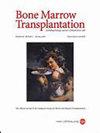The use of MSCs in steroid-refractory acute GvHD in Europe: a survey from the EBMT cellular therapy & immunobiology working party
IF 4.5
2区 医学
Q1 HEMATOLOGY
引用次数: 0
Abstract
Acute graft-versus-host disease (aGvHD) remains a significant complication of allogeneic hematopoietic cell transplantation, with 40% of patients failing to respond to high-dose steroids. Ruxolitinib has become the standard treatment for steroid-refractory aGvHD (SR-GvHD), but its failure in approximately one-third of cases highlights the need for alternative therapies. Mesenchymal stromal cells (MSCs), known for their immunomodulatory properties, are suggested as a treatment option, but their role in SR-GvHD remains unclear. To better understand MSC therapy outcomes, the EBMT Cellular Therapy & Immunobiology Working Party conducted a survey of centers treating >20 SR-GvHD patients with MSCs between 2007 and 2020. Data from 313 patients were analyzed, revealing a 44.5% overall response rate at day 28. Responders at day 7 had a higher likelihood of maintaining responses by day 28. Using a landmark analysis, the overall survival at 12 months, conditional on being alive at day 28, was 39.2%. Survival at 12 months was 48.6% for responders, compared to 24.4% for non-responders. Despite manufacturing variabilities, MSCs produced by academic pharma appear effective in SR-GvHD, offering a viable treatment alternative for heavily pretreated patients. These findings support further investigation of MSCs to establish standardized protocols and validate their efficacy as third-line therapy for SR-GvHD.

MSCs在欧洲类固醇难治性急性GvHD中的应用:EBMT细胞治疗和免疫生物学工作组的一项调查。
急性移植物抗宿主病(aGvHD)仍然是同种异体造血细胞移植的一个重要并发症,40%的患者对大剂量类固醇没有反应。Ruxolitinib已成为类固醇难治性aGvHD (SR-GvHD)的标准治疗方法,但其在大约三分之一的病例中失败,这表明需要替代疗法。间充质间质细胞(MSCs)以其免疫调节特性而闻名,被认为是一种治疗选择,但它们在SR-GvHD中的作用尚不清楚。为了更好地了解MSC治疗的结果,EBMT细胞治疗和免疫生物学工作组对2007年至2020年期间用MSCs治疗20万名SR-GvHD患者的中心进行了调查。分析了313例患者的数据,显示第28天的总有效率为44.5%。第7天的应答者在第28天维持应答的可能性更高。采用里程碑式分析,以28天存活为条件的12个月总生存率为39.2%。应答者的12个月生存率为48.6%,而无应答者为24.4%。尽管生产过程存在差异,但学术制药公司生产的间充质干细胞似乎对SR-GvHD有效,为大量预处理的患者提供了可行的治疗选择。这些发现支持对MSCs的进一步研究,以建立标准化的方案,并验证其作为SR-GvHD三线治疗的有效性。
本文章由计算机程序翻译,如有差异,请以英文原文为准。
求助全文
约1分钟内获得全文
求助全文
来源期刊

Bone Marrow Transplantation
医学-免疫学
CiteScore
8.40
自引率
8.30%
发文量
337
审稿时长
6 months
期刊介绍:
Bone Marrow Transplantation publishes high quality, peer reviewed original research that addresses all aspects of basic biology and clinical use of haemopoietic stem cell transplantation.
The broad scope of the journal thus encompasses topics such as stem cell biology, e.g., kinetics and cytokine control, transplantation immunology e.g., HLA and matching techniques, translational research, and clinical results of specific transplant protocols. Bone Marrow Transplantation publishes 24 issues a year.
 求助内容:
求助内容: 应助结果提醒方式:
应助结果提醒方式:


